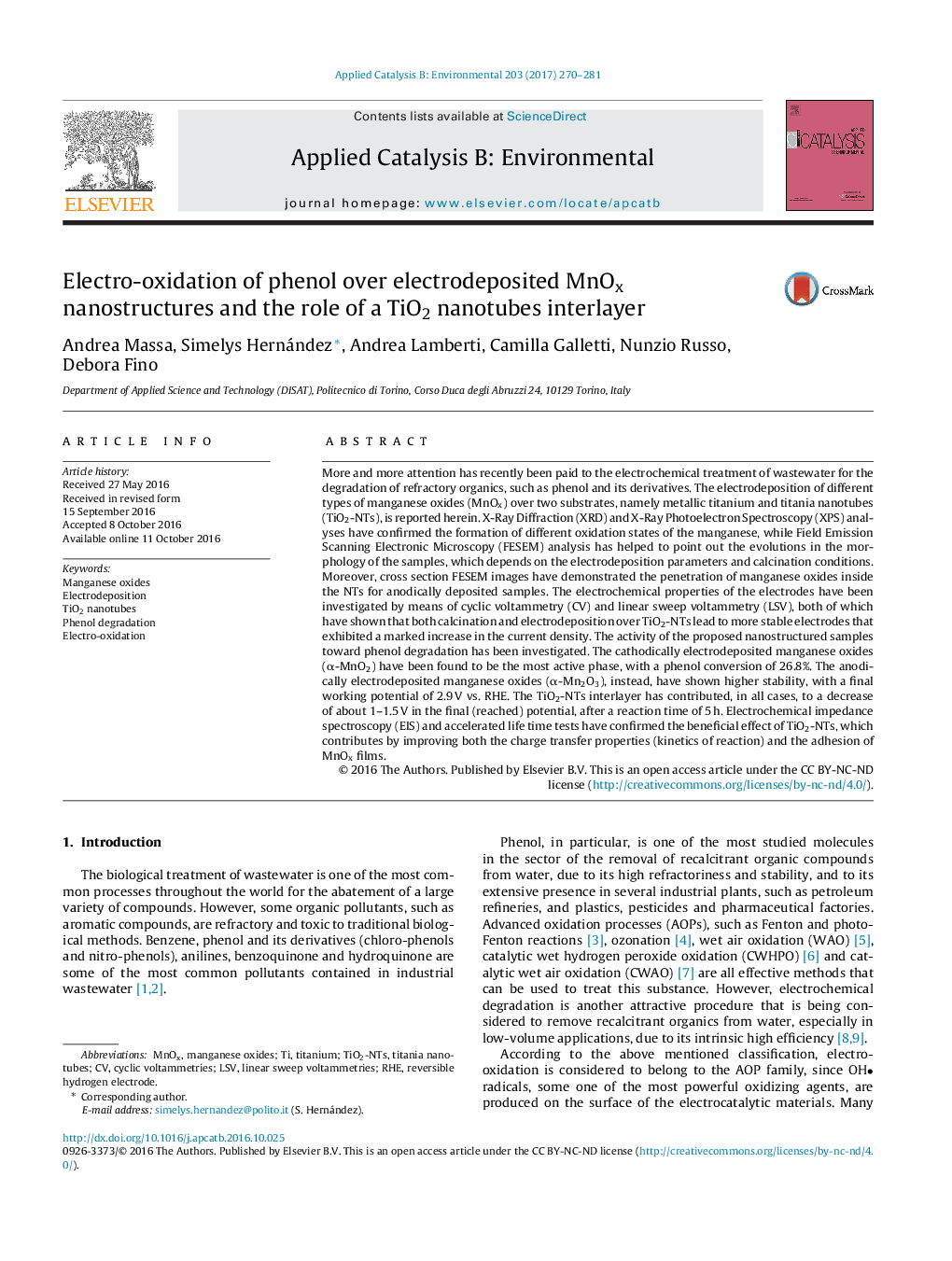| کد مقاله | کد نشریه | سال انتشار | مقاله انگلیسی | نسخه تمام متن |
|---|---|---|---|---|
| 6454454 | 1418817 | 2017 | 12 صفحه PDF | دانلود رایگان |

- MnOx were electrodeposited over Ti and TiO2-NTs for the electro-oxidation of phenol.
- Different oxidation states of the manganese and MnOx crystalline phases were obtained.
- α-MnO2 was the most active phase, while α-Mn2O3 was the most stable one.
- TiO2-NTs contribute to increase surface area and stability and to reduce the working potential.
- Energy related conversions have pointed out a promising performance of the MnOx for this application.
More and more attention has recently been paid to the electrochemical treatment of wastewater for the degradation of refractory organics, such as phenol and its derivatives. The electrodeposition of different types of manganese oxides (MnOx) over two substrates, namely metallic titanium and titania nanotubes (TiO2-NTs), is reported herein. X-Ray Diffraction (XRD) and X-Ray Photoelectron Spectroscopy (XPS) analyses have confirmed the formation of different oxidation states of the manganese, while Field Emission Scanning Electronic Microscopy (FESEM) analysis has helped to point out the evolutions in the morphology of the samples, which depends on the electrodeposition parameters and calcination conditions. Moreover, cross section FESEM images have demonstrated the penetration of manganese oxides inside the NTs for anodically deposited samples. The electrochemical properties of the electrodes have been investigated by means of cyclic voltammetry (CV) and linear sweep voltammetry (LSV), both of which have shown that both calcination and electrodeposition over TiO2-NTs lead to more stable electrodes that exhibited a marked increase in the current density. The activity of the proposed nanostructured samples toward phenol degradation has been investigated. The cathodically electrodeposited manganese oxides (α-MnO2) have been found to be the most active phase, with a phenol conversion of 26.8%. The anodically electrodeposited manganese oxides (α-Mn2O3), instead, have shown higher stability, with a final working potential of 2.9 V vs. RHE. The TiO2-NTs interlayer has contributed, in all cases, to a decrease of about 1-1.5 V in the final (reached) potential, after a reaction time of 5 h. Electrochemical impedance spectroscopy (EIS) and accelerated life time tests have confirmed the beneficial effect of TiO2-NTs, which contributes by improving both the charge transfer properties (kinetics of reaction) and the adhesion of MnOx films.
362
Journal: Applied Catalysis B: Environmental - Volume 203, April 2017, Pages 270-281